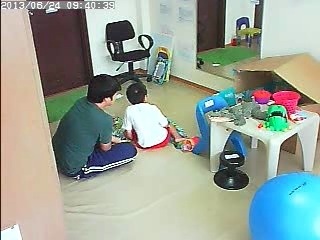Helping Nathan communicate his wants to other people:
I know Nathan loves it when I echo what he says. Sometimes I think he believes all he as to do is look at me or touch my mouth/chin and automatically, I know to echo him to his delight.
But always doing what he wants me to, will not teach him to communicate his needs to other people. So this is what I have been doing:
1. Get into the game:
I don’t challenge him right away. He looks/gestures then I do what he wants you to: echo his crazy language, like “Do it Tita Ika”…Don’t ask me what that means. It’s the equivalent of our tongue twisters. I’ll do this about 3 times until he’s laughing so loud.
2. Build a step at a time:
Before the 4the round, I model “Say ‘do it Tita Ika please.’ ” Then pause to give him time to respond.
3. Reward any attempt.
Sometimes he will just answer ” ‘Ika’ please.” Without the “say ‘Ika’ please”. Nevertheless, I give him the pleasure of listening to my echo.
This keeps him on the game and prolongs attention span instead of making him turned off at the challenge.
4. Try again.
Remember to keep being in the fun game. I continue to model a longer request, “Mama say ‘Ika’ please.”
5. Celebrate every step
When he does achieve the biggest request “Mama say … please” I echo his words in a bigger and funnier way than thank him for asking Mama.
6. Let go of the outcome
If in the end he did not achieve saying the whole request, at least the bigger priority was done: building the relationship!
Have fun son-rising!


